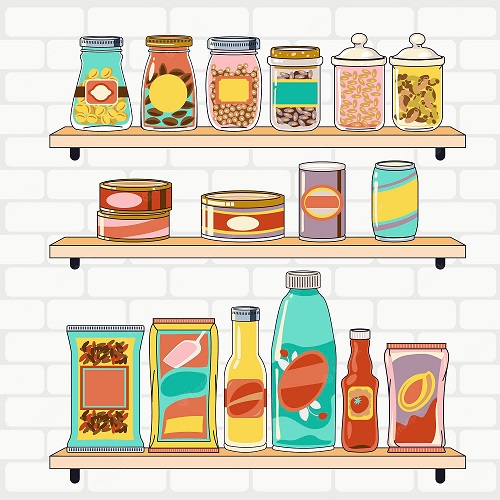You’ve just walked through the door, it’s 5 pm. There’s the kid’s homework to be completed, washing to be put on and oh, it’s probably the first chance you’ve had all day to think about dinner! You open the fridge for inspiration but all that jumps out at you is wilted lettuce and limp carrot. Time to pull out the frozen pizza or call for a takeaway.
Sound familiar?
If you find yourself on this crazy Ferris wheel of disorganisation at mealtimes, it’s time to get yourself into gear with some tips, not only to be a smart meal planner but also to be a healthy one.
Being meal organised will become a way of life and save time if you’re willing to change your mindset. It’s the change of habits that allow you to become more efficient and prepared with recipes, meal plans, shopping lists and advance thinking (I’m mainly talking dinners here, as breakfasts are fairly stock standard, as are lunches). It’s the dinners where most of us come unstuck.
How to Plan Healthy Meals
Have a go-to healthy recipe bank
By reading healthy recipe books, following healthy eating blogs and websites and reading recipe magazines for inspiration, you will bank up a pile of ideas for your meal plans. This is the fun part. Search for recipes that take about 15-20 minutes to prepare and cook, or now during winter, try slow cooker recipes that allow you to walk into the house to the magical aroma of a hot nutritious meal.
Print your bank of recipes and keep them handy. Keep the challenging recipes for the weekend when you have more time.
Get smart with your shopping list
The next step is to create shopping lists from your meal plans … but keep in mind we are talking healthy! Keep this list handy so you can jot down items that run low during the week and note ingredients from recipes you are planning for the following week. It’s this conscious way of thinking that makes you feel in control of the incomings and outgoings of your kitchen (and less inclined to impulse-buy junk). There are also many meal planning apps that can do the job for you.
Aim to keep your meals as ‘fresh’ as possible. This will help to resist sauces, breadcrumbed meats and processed meals. Remember: you’re aiming to stay as close to nature as food can be.
When planning a week’s worth of dinners, I have a basic method of keeping some items on rotation to make it easier to plan a balanced meal. Stick with your basics and from there you can get creative as you like.
Here’s a handy guide to get you started with healthy grocery basics for your weekly shopping list
Complex carbohydrates
Brown rice (the 90-second microwave sachets are a godsend), wholewheat pasta, rice noodles, couscous, quinoa, sweet potato/potato to make homemade chips, wholewheat buns for healthy burgers or wraps.
Salad items and an assortment of veggies
We’re talking in-season vegetables that you can whip up into a salad, use for a stir-fry or turn into a delicious bake. Don’t forget to load up on frozen vegetables as well – these are your best friend when it comes to dinners on the run and maybe more nutritious than fresh vegetables as they are snap frozen immediately after picking. Add some cheese for variety, or fruit to a salad to bump up your nutrition if your day’s intake has been a little ho-hum.
Sources of protein
Limit red meat to twice a week and try to alternate different sources so you’re not having one particular meat in succession. Try low-fat cuts of lamb, pork, beef, kangaroo, chicken and turkey plus a variety of fish. Also, try to include a vegetarian meal once a week using legumes or eggs, or make a vegetable soup and serve it with crusty wholegrain bread.
The good news is that by planning your meals and hitting the supermarket aisles with a list you will save time and shop with purpose. The aim is to buy most of your food from the perimeter of the grocery store, buying up, for example, on fresh fruit, vegetables, meat, milk, yoghurt, cheese, fish, eggs, frozen vegetables and wholewheat bread. Make it your goal to avoid certain aisles (you know the ones I mean), the ones that only tempt you with products you don’t need.
A couple of extra tips
- Each morning when you’re eating breakfast, mentally take note of what you’ll make for dinner so you can defrost, set up the slow cooker or prep some veggies before you leave the house.
- Eat your perishables up early in the week, and then make a quick trip to the markets to gather fruit and veg or use frozen veggies in the latter half.
- This will be a huge learning curve for some and may take a few weeks to get a grasp on the changes you’ll be making to your routine. It’s about dedicating yourself to the goal of serving healthy meals with less stress.
- The organisation is the key to success and healthy meal planning is no exception to that.





